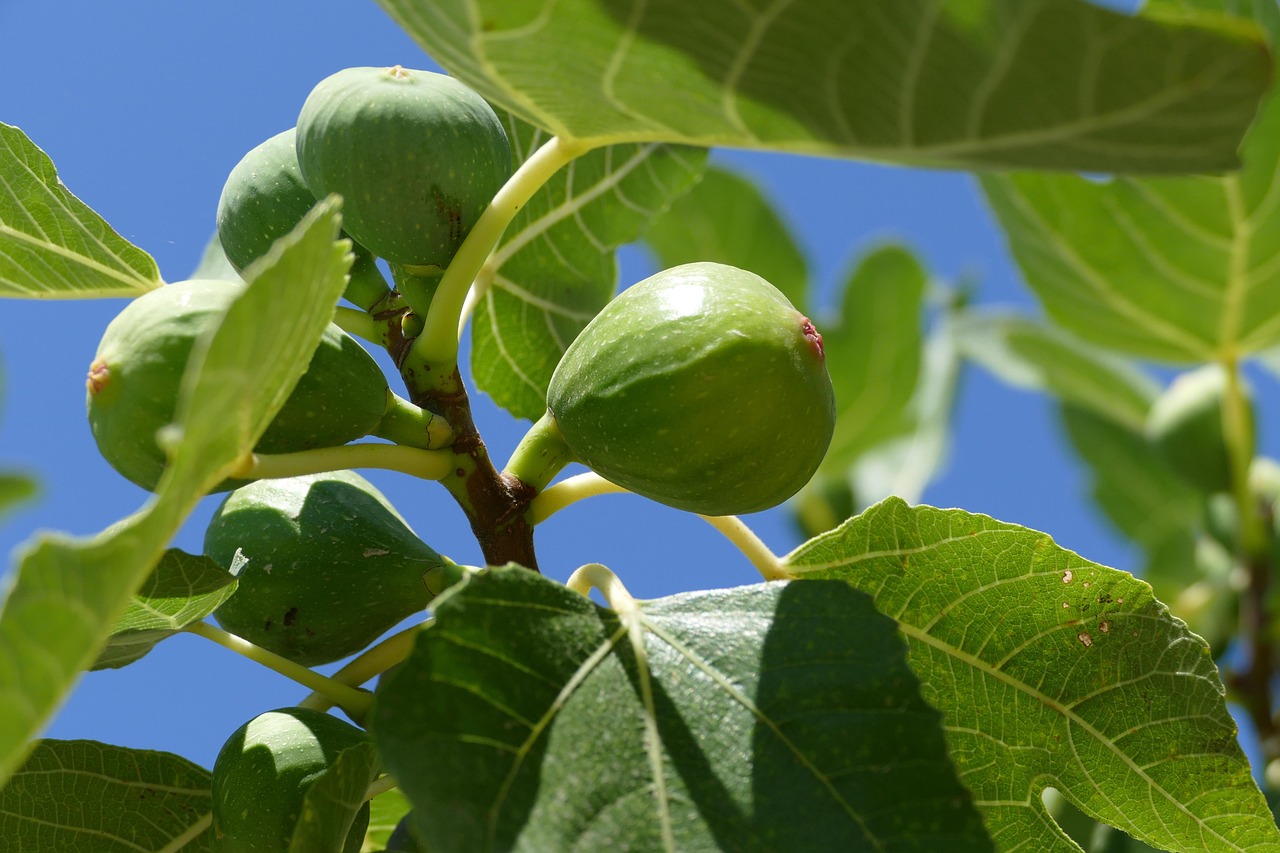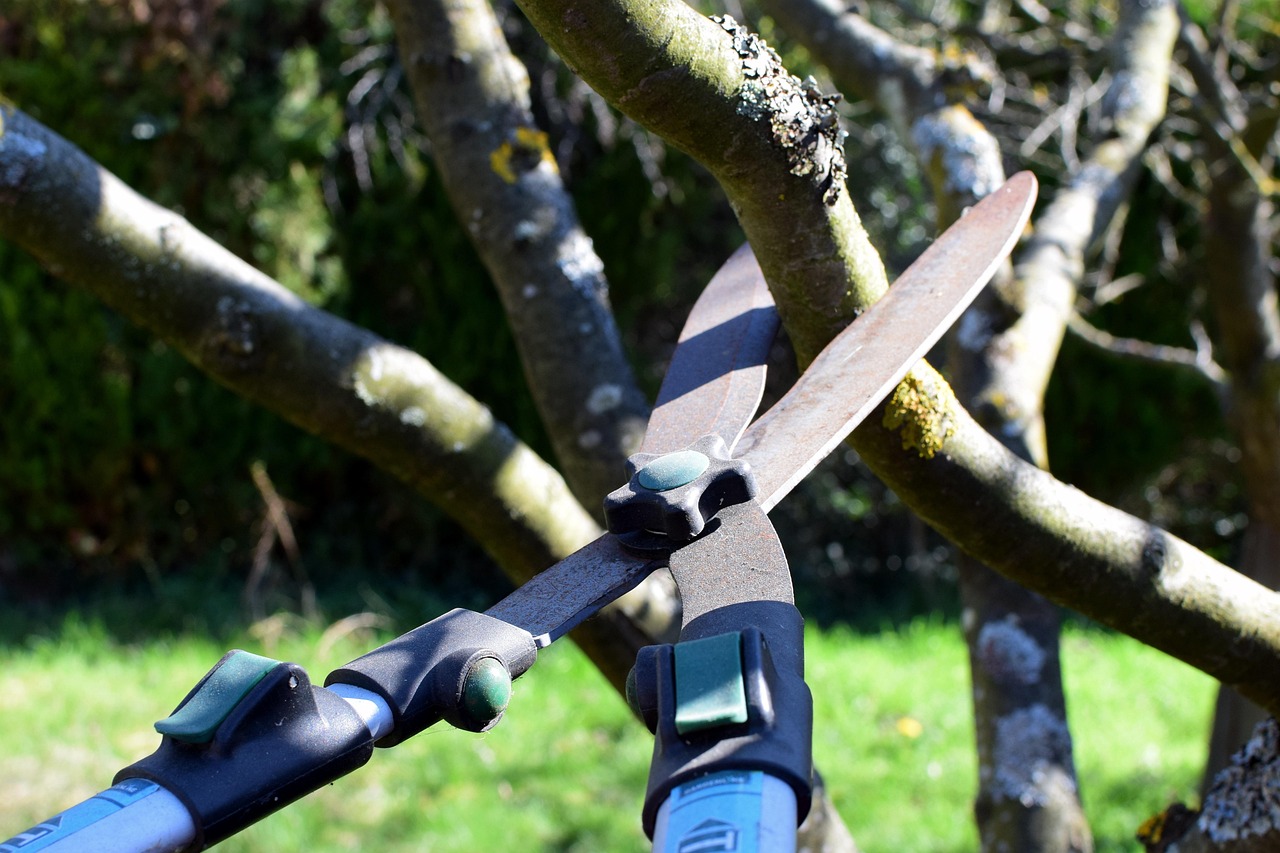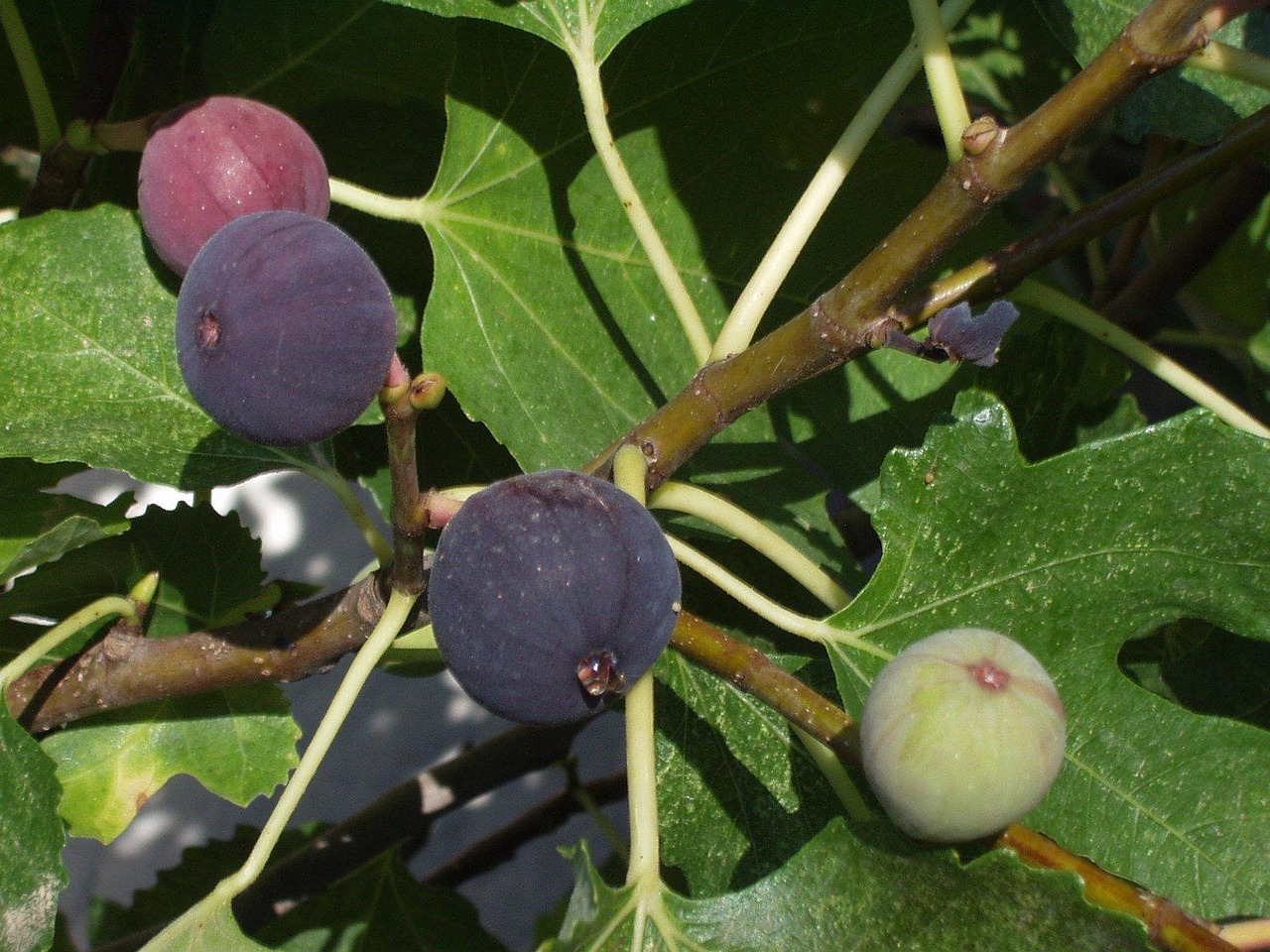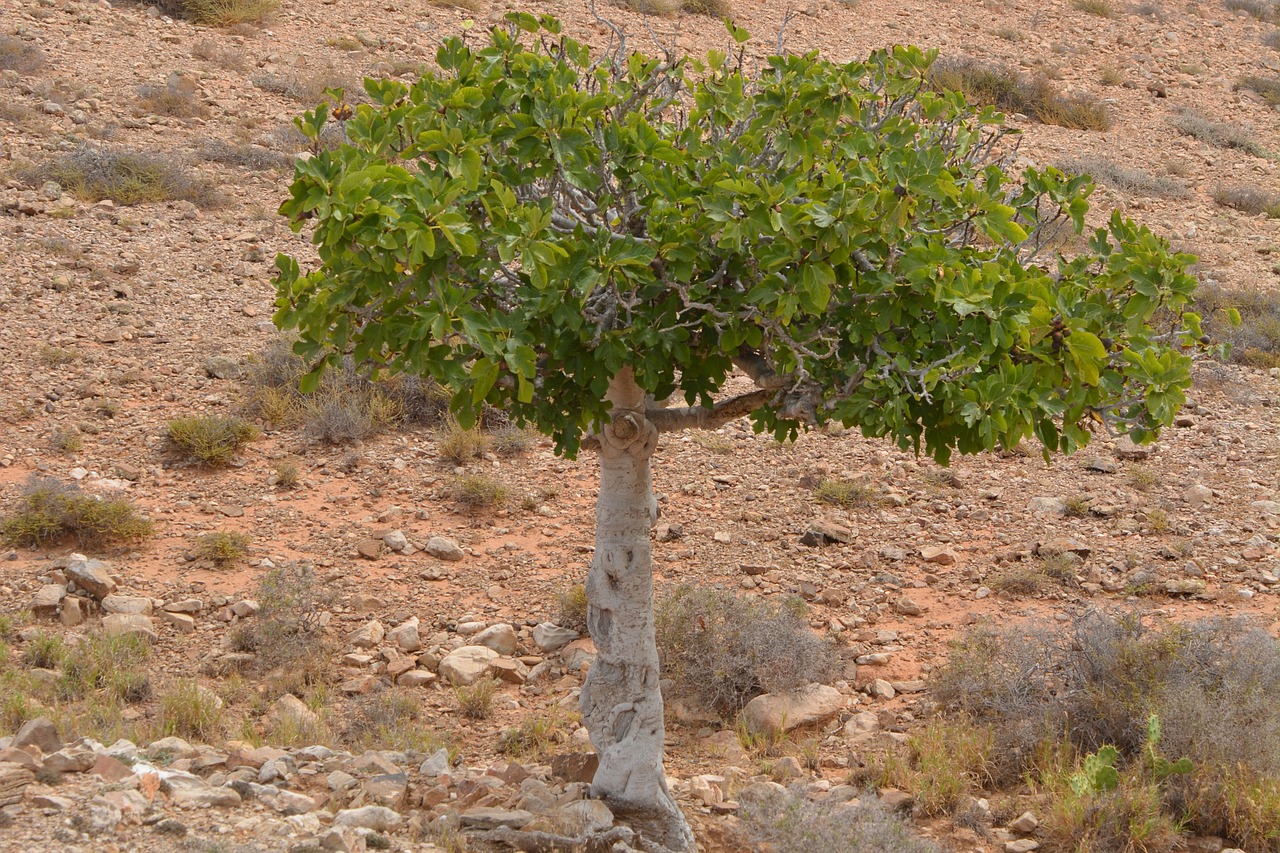Pruning fig trees effectively can help prevent fungal diseases by improving air circulation and reducing humidity around the leaves. Proper techniques can minimize the risk of infection and promote healthier growth.
Fig trees are beloved for their delicious fruits and lush foliage. However, like many fruit-bearing plants, they are susceptible to various fungal diseases. These diseases can cause significant damage, affecting both the health of the tree and the quality of its fruit. One of the most effective ways to combat these issues is through proper pruning practices.

Pruning is not just about shaping a tree or removing dead branches. It plays a crucial role in maintaining the overall health of fig trees. When done correctly, pruning can enhance air circulation within the tree’s canopy, allowing sunlight to penetrate and reducing humidity levels that foster fungal growth. Understanding the optimal time and techniques for pruning can make a significant difference in the prevention of fungal diseases.
Understanding Fungal Diseases in Fig Trees
Fungal diseases in fig trees can manifest in various forms, including leaf spots, blight, and root rot. Each of these diseases has specific causes and symptoms that gardeners should be aware of. Here are some common fungal diseases that affect fig trees:
| Disease | Symptoms | Causes |
|---|---|---|
| Leaf Spot | Brown spots on leaves, leaf drop | High humidity, poor air circulation |
| Blight | Wilting branches, blackened leaves | Overwatering, wet conditions |
| Root Rot | Yellowing leaves, stunted growth | Poor drainage, excessive moisture |
These diseases thrive in environments where moisture levels are high. Therefore, maintaining a well-pruned fig tree is essential in creating conditions that discourage fungal infections.

Timing of Pruning
The timing of pruning is crucial for effective disease prevention. Generally, the best time to prune fig trees is during their dormant season, which typically occurs in late winter or early spring before new growth begins. Pruning during this period minimizes stress on the tree and allows for quicker recovery as it enters its growing phase.
Additionally, pruning after the harvest can also be beneficial. This practice helps to remove any branches that may have been affected during the growing season. However, pruning should be avoided during wet weather to prevent exposing fresh cuts to fungal spores present in the environment.
Pruning Techniques for Fungal Disease Prevention
When it comes to pruning fig trees, several techniques can optimize health and reduce disease risk. Here are some recommended practices:

- Remove Dead or Diseased Wood: Cutting away any dead, dying, or diseased branches helps prevent the spread of fungi.
- Thin Out Canopy: Removing excess interior branches increases air circulation and light penetration.
- Avoid Over-Pruning: While it may be tempting to cut back heavily, excessive pruning can stress the tree and lead to more vulnerability.
- Use Clean Tools: Always sanitize pruning tools before use to prevent transferring pathogens from one plant to another.
- Make Clean Cuts: Use sharp tools to make clean cuts, which heal faster and are less likely to become infected.
These techniques not only help maintain the shape of the fig tree but also reinforce its defenses against fungal diseases.
The Importance of Monitoring and Maintenance
Pruning should be part of a broader maintenance plan for fig trees. Regular monitoring for signs of disease is essential. Gardeners should inspect their trees frequently for any unusual symptoms or signs of fungal infections. Early detection allows for prompt action, which is critical in preventing outbreaks.
In addition to pruning, other maintenance practices include proper watering techniques and ensuring good soil drainage. Fig trees prefer well-drained soil. Overly saturated soil can lead to root rot and other fungal issues. Therefore, it is important to water deeply but infrequently, allowing the soil to dry out between watering sessions.

In summary, effective fig tree pruning is a vital component in preventing fungal diseases. By understanding when and how to prune, as well as maintaining vigilant monitoring and care practices, gardeners can ensure their fig trees remain healthy and productive.
Pruning Tools and Their Importance
Using the right tools is essential for effective pruning of fig trees. Proper equipment not only makes the task easier but also ensures that cuts are clean and precise. Here are some commonly used tools for pruning fig trees:
- Hand Pruners: Ideal for cutting small branches and stems. They provide precision and control, making them perfect for detailed work.
- Loppers: These are used for thicker branches that cannot be cut with hand pruners. They provide leverage and allow for larger cuts.
- Saws: A pruning saw is necessary for removing very thick branches. It can handle larger cuts more effectively than loppers or hand pruners.
- Sanitizing Solution: A solution like rubbing alcohol or bleach diluted in water is crucial for sanitizing tools between uses to prevent disease transmission.
- Gardening Gloves: Protective gloves help keep hands safe while pruning and provide a better grip on tools.
Investing in high-quality tools will not only make pruning easier but also contribute to the overall health of the fig tree by ensuring that cuts heal properly.
Understanding Fig Tree Growth Patterns
Before initiating any pruning, it is crucial to understand the growth patterns of fig trees. Fig trees typically exhibit vigorous growth, which can sometimes lead to overcrowding in the canopy. Recognizing how they grow will help in making informed pruning decisions. Key aspects include:
- Growth Habit: Fig trees can grow upright or spread wide, depending on the variety. Knowing this will guide how much and where to prune.
- Fruit Production: Most fig trees produce fruit on new wood, so judicious pruning encourages healthy new growth for optimal fruit yield.
- Leaf Density: A dense canopy can trap moisture, leading to diseases. Thinning the canopy is essential for air circulation.
By understanding these growth patterns, gardeners can tailor their pruning techniques to enhance the health and productivity of their fig trees.
Seasonal Care and Its Impact on Fungal Diseases
Caring for fig trees throughout the seasons plays a significant role in preventing fungal diseases. Each season presents unique challenges and opportunities for tree health management. Here’s a breakdown of seasonal care:
Spring
Spring is a critical time for fig tree care as new growth begins. During this season, consider the following:
- Complete Pruning: Ensure all pruning occurs before new buds swell. This helps direct the tree’s energy into healthy new growth.
- Pest Monitoring: Check for early signs of pests that could weaken the tree and make it more susceptible to fungal infections.
Summer
Summer requires vigilance regarding watering and monitoring for diseases:
- Watering Schedule: Maintain a consistent watering schedule, ensuring deep watering without waterlogging.
- Pest Control: Implement integrated pest management strategies if pests are spotted, as they can introduce fungal spores.
Fall
As leaves change color and fall approaches, it’s important to prepare the tree for dormancy:
- Final Pruning: Conduct any necessary late-season pruning to remove dead or diseased wood.
- Leaf Cleanup: Rake and dispose of fallen leaves to minimize fungal spores that could overwinter in your garden.
winter
Winter is the dormancy period, but it is crucial for long-term health:
- Tool Maintenance: Clean and sharpen tools during this period so they are ready for the next growing season.
- Mulching: Apply a layer of mulch around the base of the tree to protect roots from cold temperatures and retain soil moisture.
The Role of Fertilization in Disease Prevention
Adequate nutrition plays an important role in maintaining a healthy fig tree. Fertilization strengthens trees, making them less susceptible to diseases. Here are some key points about fertilization:
- Nutrient Balance: Use a balanced fertilizer that provides essential nutrients such as nitrogen, phosphorus, and potassium.
- Timing of Fertilization: Apply fertilizer in early spring as new growth begins. Avoid fertilizing late in the growing season as this can promote new growth that may not harden off before winter.
- Soil Testing: Conduct periodic soil tests to determine nutrient levels and adjust fertilization practices accordingly.
Proper fertilization contributes to robust growth, which enhances a tree’s ability to fend off fungal infections.
Organic Methods for Disease Control
Many gardeners prefer organic methods for managing fungal diseases. These methods can be effective while being environmentally friendly. Consider these organic options:
- Copper Fungicide: This organic fungicide can help prevent a variety of fungal diseases when applied as needed.
- Baking Soda Spray: A mixture of baking soda and water can create an environment that is unfavorable for fungal growth when sprayed on leaves.
- Neem Oil: Neem oil is a natural pesticide that helps control fungal infections and pests simultaneously.
Implementing these organic methods can enhance the health of fig trees while minimizing chemical use in gardening practices.
This comprehensive understanding of pruning practices, seasonal care, fertilization, and organic methods will equip gardeners with the knowledge needed to maintain healthy fig trees and prevent fungal diseases effectively.
Identifying Signs of Fungal Diseases
Recognizing the early signs of fungal diseases is crucial for effective management. Gardeners should familiarize themselves with common symptoms that can indicate a problem. Early detection allows for immediate action, which can prevent further damage to the tree. Here are some of the most common signs of fungal infections:
- Discoloration of Leaves: Yellowing or browning of leaves can indicate stress or infection. Look for spots that may develop into larger patches.
- Leaf Drop: Premature dropping of leaves, especially during non-autumn seasons, can signify underlying issues related to fungal disease.
- Mold Growth: Visible mold or mildew on leaves or stems is a clear indication of fungal activity. This often appears as a powdery or fuzzy layer.
- Wilting: Wilting branches or leaves, regardless of soil moisture levels, can suggest root issues or systemic infection.
- Stunted Growth: Poor growth or lack of new shoots can be a sign that the tree is struggling due to disease.
Regular inspection of fig trees for these symptoms can help gardeners take prompt action before the problem escalates.
Common Fungal Diseases Affecting Fig Trees
Understanding the specific fungal diseases that affect fig trees can aid in prevention and management strategies. Below are some common fungal diseases:
| Disease Name | Symptoms | Management Strategies |
|---|---|---|
| Fusarium Wilt | Yellowing leaves, wilting, and stunted growth | Remove infected plants, improve drainage, and avoid overwatering |
| Powdery Mildew | White powdery coating on leaves and stems | Increase air circulation, apply fungicide, and remove affected parts |
| Anthracnose | Dark spots on leaves and fruit, leaf drop | Prune affected areas, avoid overhead watering, and apply fungicide as needed |
| Root Rot | Yellowing leaves, mushy roots, and poor growth | Avoid overwatering, ensure proper drainage, and treat with fungicides if necessary |
By recognizing these diseases and their symptoms, gardeners can implement management strategies more effectively.
Preventive Measures Beyond Pruning
While pruning is a critical component in preventing fungal diseases, several other preventive measures can enhance the overall health of fig trees. Implementing a multi-faceted approach will lead to better disease control.
Soil Health Management
Healthy soil is the foundation for strong plant growth. Here are some practices to improve soil health:
- Soil Testing: Regular soil tests can help determine nutrient levels and pH balance. Adjustments can be made based on test results to improve soil quality.
- Add Organic Matter: Incorporating compost or well-rotted manure can enhance soil fertility and structure. This aids in moisture retention and drainage.
- Crop Rotation: Rotating crops in the area surrounding fig trees can reduce the buildup of pathogens in the soil.
Irrigation Practices
The way fig trees are watered significantly impacts their susceptibility to fungal diseases. Follow these irrigation practices:
- Avoid Overhead Watering: Watering at the base of the tree minimizes moisture on the foliage, reducing the risk of fungal infections.
- Drip Irrigation: Consider using drip irrigation systems to provide consistent moisture without wetting leaves.
- Water Deeply but Infrequently: Allow the soil to dry out between watering sessions to encourage strong root growth and prevent root rot.
Pest Management
Pests can weaken fig trees and make them more susceptible to diseases. Implementing an effective pest management strategy is essential:
- Regular Inspections: Frequently check for signs of pests such as aphids or spider mites that can stress the tree.
- Natural Predators: Encourage beneficial insects like ladybugs that feed on pests to naturally control their populations.
- Pesticides: Use organic pesticides as a last resort when pest populations become unmanageable. Always follow label instructions carefully.
The Role of Mulching in Disease Prevention
Mulching offers numerous benefits to fig trees and can help in preventing fungal diseases. Here’s how:
- Mositure Retention: Mulch helps retain moisture in the soil, which is beneficial during dry periods while preventing over-saturation from heavy rains.
- Weed Suppression: A good layer of mulch suppresses weeds that compete for nutrients and water, thereby promoting healthier tree growth.
- Temperature Regulation: Mulch helps regulate soil temperature, creating a more stable environment for root development.
- Pest Barrier: Organic mulch can act as a barrier against certain pests that might harm the tree.
Select organic materials such as wood chips, straw, or shredded leaves for mulching. Avoid materials that may harbor pathogens or attract pests.
The Impact of Climate on Fungal Diseases
The climate plays a significant role in the prevalence of fungal diseases in fig trees. Understanding local climate conditions is essential for effective disease management. Here are some factors to consider:
- Humidity Levels: High humidity creates ideal conditions for many fungal pathogens. Monitoring humidity levels can guide watering practices and pruning decisions.
- Temperature Fluctuations: Extreme temperature changes can stress trees, making them more vulnerable to diseases. Protecting trees during unexpected cold snaps is crucial.
- Rainfall Patterns: Excessive rainfall can lead to waterlogged soils and increased risk of root rot. Implementing drainage solutions may be necessary in such conditions.
A thorough understanding of how climate affects fig tree health will enable gardeners to tailor their care practices accordingly, further reducing the likelihood of fungal disease outbreaks.
Integrating Technology in Fig Tree Care
As gardening practices evolve, technology is increasingly being integrated into fig tree care. Here are some innovative approaches that can help monitor and manage fig tree health more effectively:
- Soil Moisture Sensors: These devices can provide real-time data about soil moisture levels. By using sensors, gardeners can optimize their irrigation schedules, ensuring trees receive the right amount of water without overwatering.
- Weather Apps: Utilizing weather applications can help gardeners stay informed about upcoming rain, humidity levels, and temperature fluctuations. This information is vital for making timely decisions regarding pruning and disease management.
- Drones and Aerial Imaging: Drones equipped with cameras can be used to survey large fig orchards. They can identify areas of stress or disease that might not be easily visible from the ground, allowing for targeted intervention.
- Mobile Applications: Many gardening apps offer disease identification features. By simply taking a photo of a plant’s symptoms, gardeners can receive instant feedback on potential diseases and recommended treatments.
The integration of technology into fig tree maintenance not only enhances the effectiveness of traditional practices but also enables more precise and informed decision-making.
Community and Knowledge Sharing
Gardening communities play a vital role in sharing knowledge about fig tree care and disease prevention strategies. Engaging with fellow gardeners can provide invaluable insights and foster a supportive environment. Here are some ways to connect with gardening communities:
- Local Gardening Clubs: Joining a local gardening club can provide opportunities to meet other fig tree enthusiasts. Members often share tips, experiences, and resources.
- Online Forums: Websites and social media platforms dedicated to gardening allow for the exchange of information on specific issues, including fungal diseases and effective pruning techniques.
- Workshops and Seminars: Attending workshops hosted by agricultural extension services or local nurseries can enhance skills and knowledge about fig tree cultivation and care.
- Community Gardens: Participating in community gardens allows for hands-on experience in managing fig trees alongside others, fostering a collaborative learning environment.
By tapping into community resources, gardeners can enhance their understanding of fig tree care and find support when facing challenges.
Environmental Considerations
As the awareness of environmental sustainability grows, it is essential for gardeners to consider the impact of their practices on the environment. Here are some eco-friendly practices that can benefit both fig trees and the surrounding ecosystem:
- Companion Planting: Planting companion plants alongside fig trees can enhance growth and deter pests. For example, marigolds are known to repel certain insects while attracting beneficial pollinators.
- Organic Fertilizers: Using organic fertilizers promotes soil health without harming beneficial microorganisms. This approach supports the overall ecosystem while providing essential nutrients to fig trees.
- Natural Pest Control: Implementing natural pest control methods reduces chemical runoff into the environment. This includes using insecticidal soaps or introducing beneficial insects like ladybugs to control aphid populations.
- Water Conservation Techniques: Implementing rainwater harvesting or using drip irrigation systems conserves water while ensuring that fig trees receive adequate moisture.
Adopting environmentally friendly practices not only enhances the health of fig trees but also contributes positively to the surrounding ecosystem.
Final Thoughts
Caring for fig trees requires a comprehensive approach that encompasses pruning, proper watering, soil management, and disease prevention strategies. By understanding the specific needs of fig trees and implementing effective practices, gardeners can promote healthy growth and minimize the risk of fungal diseases.
The integration of technology and community resources can further enhance gardening efforts, providing valuable insights and support. Adopting eco-friendly practices ensures that fig tree cultivation contributes positively to the environment.
Ultimately, a proactive approach to fig tree care, combined with ongoing education and community engagement, will lead to fruitful harvests and thriving trees. Whether you are a novice gardener or an experienced horticulturist, implementing these strategies will help you cultivate healthy fig trees while enjoying the process of gardening.
